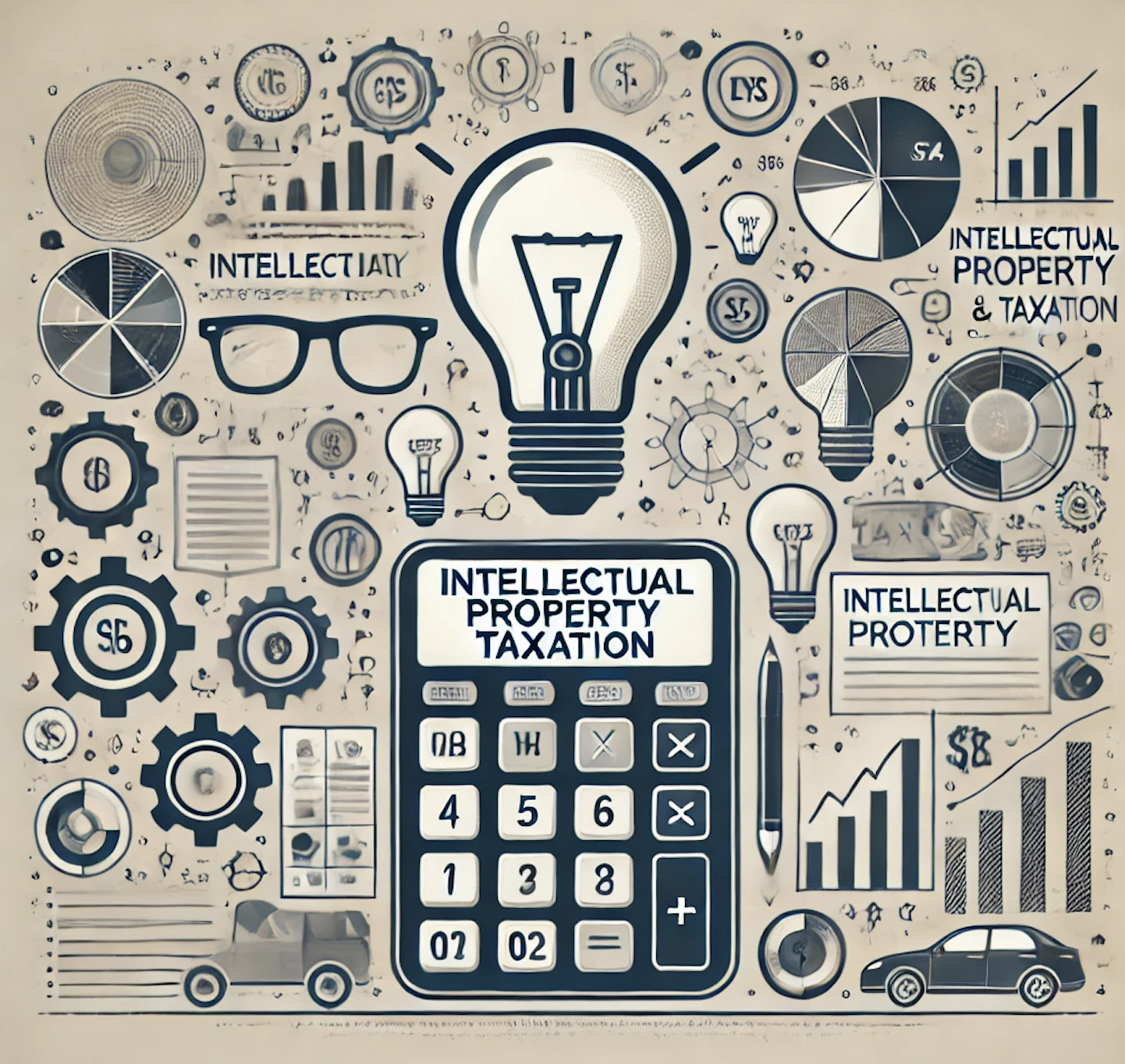Introduction
Since the major overhaul introduced by the 2019 Finance Act, the so-called "IP Box" scheme has become a considerable asset working to boost business growth and competitiveness. Indeed, the renewal of this scheme and the extension of its scope to software has brought a breath of fresh air to the intellectual innovation scene. By investing in the research and development of new intangible assets, companies can now benefit from substantial tax advantages. In addition to the well-known Research Tax Credit (Crédit d'Impôt Recherche - CIR), companies subject to corporate income tax can also opt for separate taxation at a reduced rate of 10% on income derived from the granting, sub-granting or sale of certain intangible assets, provided certain conditions are met.
However, the IP Box regime is not just the prerogative of legal entities. Even if the provisions of Article 238 CGI do not apply to individual inventors, they can still benefit from this tax incentive under Article 93 quater of the CGI.
I of this article stipulates that: "the long-term capital gains or losses regime provided for in article 39 quindecies is applicable to income received by an individual inventor and his assigns from the sale or licensing of copyrighted software, a patentable invention or an intangible asset that satisfies the conditions mentioned in 1°, 2° or 4° of I of article 238. By way of derogation from the first paragraph of I of article 39 quindecies, the rate applicable to the transactions mentioned in this paragraph is 10%".
Thus, income derived from the exploitation of these intangible assets by individual inventors, their heirs or private individuals who have acquired them free of charge or for valuable consideration falls into the "non-commercial profits" category. They are, however, taxed under the long-term capital gains regime, at a reduced rate of 10%. In addition to the tax, social security contributions are levied at a rate of 17.20%, giving a total tax take of 27.20%.
However, for an individual to benefit from the "IP Box", he or she must first meet certain conditions (I) which, once met, will enable this preferential tax arrangement to be implemented (II).
�Conditions for application of the IP Box to individuals
In order to benefit from the IP Box, two cumulative conditions must be met by the taxpayer. The intangible asset concerned must be eligible (A), and the transaction giving rise to the taxable profits must fall within the scope of the scheme (B).
Eligible assets
According to article 93 quater of the French General Tax Code, the following are eligible for the IP Box scheme:
Software licenses protected by copyright, i.e. works that emanate from the mind, are sufficiently elaborate and have an original character.
Patents and patentable inventions or improvements thereto. Patents are industrial property titles which grant the holder exclusive rights to exploit the patented invention by commercial means for a limited period, generally 20 years from the date of filing of the application. Patentable inventions, on the other hand, correspond to creations of the mind which meet the conditions of patentability necessary for a patent to be granted by a Receiving Office, i.e. inventions which are not expressly excluded by law and which provide an answer to a technical solution, while being new, innovative and having industrial applications. However, it is important to point out that the legislator does not require the taxpayer to present a patentability certificate when filing his application with the tax authorities. Indeed, taxpayers can always obtain approval if they can demonstrate the patentability of their invention. In practice, however, such proof is very difficult to establish, and has been since the repeal of the documentary opinion by the Finance Act 2023. Indeed, this document enabled the INPI to certify the patentability of an invention even before obtaining a final patent. That said, the individual inventor still has other options. In fact, according to some authors, in addition to filing his application with the tax authorities, he can also file a patentability application with a Receiving Office. In this case, as the examination of the patent application progresses, he will provide the tax authorities with any evidence enabling him to establish the patentability of his invention, including the search report and the preliminary opinion on patentability. However, even if these documents are of benefit to the inventor, they are merely the beginnings of proof, devoid of any definitive or binding character. They cannot therefore be relied upon by the tax authorities, especially as neither case law nor administrative doctrine has yet ruled on the subject.
Intangible assets satisfying the conditions mentioned in 1°, 2° and 4° of I of article 238 CGI. These include utility certificates, supplementary protection certificates attached to a patent, plant variety certificates and industrial manufacturing processes. However, specifically for processes, the legislator requires that they be the result of research operations, that they constitute the essential accessory to the exploitation of a patented invention, a utility certificate or a supplementary protection certificate attached to a patent, and that they are the subject of a single operating license with the invention.
Thus, as soon as the intangible asset targeted by the individual belongs to one of the above-mentioned categories, it will be considered eligible for the IP Box. However, this eligibility alone is not sufficient. In addition to this first condition, the transaction giving rise to the taxable income must also fall within the scope of this preferential tax regime.
Operations covered by the IP Box
Articles 93 quater and 39 terdecies of the French General Tax Code (CGI) stipulate that the long-term capital gains or losses regime applies to income received by individual inventors and their beneficiaries from the sale or grant of licenses to exploit the aforementioned intangible assets.
The term "assignment" refers to any transaction involving the removal of the items in question from the assets of the assignor, in return for financial consideration (in cash or in kind).
Concessions cover any leasing contract by which the owner of the intangible asset (the "licensor") grants the right to exploit all or part of his asset to a third party (the "licensee"), in return for payment of a royalty. The license may take several forms:
It may be exclusive or non-exclusive;
It may be concluded for the whole of the territory or territories for which the invention enjoys legal protection, or for part of it only;
It may relate to all the rights or to certain elements only (for example, the license may concern only certain applications of a patent).
In addition, a license to exploit refers to any contract granting the licensee the right to use the invention both for internal purposes, for its own needs, and with a view to producing and marketing goods and services.
However, the tax authorities specify that when the contract covers both items that fall within the scope of Article 39 terdecies 1 of the General Tax Code and items that do not, the regime provided for in Article 39 terdecies 1 of the General Tax Code applies only to those items that meet the conditions set out in the text. Thus, in the case of global contracts covering a set of elements, whether patentable or not, and technical assistance services, a distinction should be made between two situations:
Either the contract makes it possible to isolate the price of each element and each service covered by the contract. In this case, this price should be taken into account when calculating the proceeds from the transaction of only those elements of industrial property that fall within the scope of the scheme, i.e. the eligible intangible assets mentioned in the previous paragraph.
Or the contract stipulates a global price. In this case, since the long-term capital gains regime applies to only part of the items covered by the terms of the contract, it is necessary to break down the overall price. Consequently, it is up to the taxpayer to determine the part of the price corresponding to the remuneration of these assets according to the most appropriate method, and to be able to trace this method in the documentation made available to the tax authorities in the event of an audit. In this respect, the breakdown of the overall price must be based on objective factors. It can be based either on comparisons with transactions carried out on similar dates and relating to eligible items whose characteristics are similar to those covered by the contract, or on one or more allocation keys based on accounting data such as: the intrinsic value of the rights transferred, the value retained for the acquisition of the rights, the cost price of the various items and services covered by the contract, etc. In this case, the valuation criteria used must be based on the same criteria as those used for the contract. In this case, the valuation criteria used for each element of the contract must be consistent.
IP Box implementation
In order to implement the IP Box, it is first necessary to identify the income generated by the operation that is likely to fall within the scope of the scheme (A). Once identified, this income will serve as the basis for determining the final amount of tax due by the individual inventor or his successors (B).
Identifying taxable products
The last paragraph of Article 39 terdecies 1 of the French General Tax Code states that, in principle, the long-term capital gains regime does not apply to patents, patentable inventions or industrial manufacturing processes that do not qualify as fixed assets or were acquired for valuable consideration less than two years ago.
This principle is tempered, however, by the fact that industrial property rights held by individuals, either as independent inventors or after having acquired them for valuable consideration or free of charge, do not constitute a means of exploitation. In fact, these inventions are considered to be the very product of the inventor's creative activities. Unlike those held by industrial and commercial companies, they do not therefore have the nature of assets allocated to the exercise of a non-commercial profession.
Consequently, it is accepted that this circumstance is not such as to deprive the interested parties of the application of the long-term capital gains regime for the taxation of proceeds from the sale or licensing of these intangible assets.
Accordingly, the preferential tax regime set out in article 93 quater of the French General Tax Code applies to net income from the sale and licensing of patents or patentable inventions received by individual inventors, their heirs or private individuals who have acquired these rights, including where there is a relationship of dependence between the licensor and licensee.
Furthermore, in the case of natural persons, the tax authorities specify that there is no need to take into account the date on which the industrial property rights were acquired by the inventor, provided that they were discovered or developed by the inventor or were transferred to him free of charge. On the other hand, where industrial property rights have been acquired for valuable consideration, income derived from the sale or licensing of these rights is not eligible for the long-term capital gains regime until two years after the date of acquisition. Income received before the expiry of this period is subject to the progressive scale of income tax.
However, the determination of taxable income differs between sale and grant transactions:
Indeed, the value of the consideration received by the transferor is considered as income from a sale, i.e., the sum acquired by the seller in the case of a sale, the actual value of the goods received in the case of an exchange, and the actual value of the securities received as remuneration in the case of a contribution. These proceeds are taxable in the year in which they are received. However, individual inventors taxed as non-commercial profits who contribute a patent, a patentable invention or an industrial manufacturing process to a company responsible for exploiting it, may request deferral of taxation of the capital gain realized on this occasion.
On the other hand, the income from a concession corresponds to the results of the management of the concession, i.e. the contractual royalties received during the tax year.
Furthermore, in the case of sale or concession contracts relating to a set of items, only some of which are eligible assets, only the net results directly derived from the exploitation of these assets will qualify as taxable income.
Once the income subject to the IP Box regime has been identified, a calculation must be made to determine the amount of tax due by the taxpayer.
Determining the tax due by the taxpayer
Only net amounts are subject to tax. A deduction must therefore be made from the income generated by the operation of eligible assets in order to determine the taxable amount. However, deductible expenses differ according to whether the transaction is a transfer or a concession contract:
In the case of a transfer transaction, deductions are made for costs incurred in researching and developing the patent, or expenses paid for its acquisition, less any depreciation applied where the item was included in business assets. Secondly, costs incurred in maintaining or improving the invention. However, if the sums thus deducted exceed the sale price, the corresponding loss may be offset, where applicable, against other industrial property income received by the taxpayer during the tax year or against overall income. This loss is deductible from overall income for the year in which the patent is taken and for the following nine years, if the taxpayer receives no taxable income or receives income that is less than the costs incurred. The period begins to run in the year following that in which the patent is taken out (or the application is filed if the patent is granted at a later date). However, no deduction may be made where the above-mentioned costs have already been deducted from taxable non-trading profits as and when they are paid, or where, exceptionally, the patent has been capitalized and is fully amortized at the time of sale. In such cases, the taxable proceeds will be equal to the transfer price.
In the case of concessions, research costs are deducted from the proceeds, as are costs incurred in managing the concession, i.e., those taken into account in determining the net income of the operation, i.e., costs incurred in finding licensees, negotiating and concluding contracts, managing the licenses themselves, as well as collection and litigation costs. However, patent creation costs incurred with a view to issuing a patent are excluded, provided their counterpart is the creation of a fixed asset. In addition, where the licensee is taxable as a non-commercial business, Article 93(1)(8) of the CGI expressly recognizes that royalties derived from the sale of an eligible asset are deductible expenses. However, this principle is tempered when the grantor and the licensee are dependent on each other. In this case, the amount of the royalties is deductible only for a fraction of their amount equal to the ratio existing between the long-term capital gains rate at which they were taxed by the grantor and the normal corporate tax rate.
Once the expenses have been identified, they must be subtracted from the income derived from the sale or concession transaction in order to obtain the net result.
Thus, if the value obtained is positive, it will be treated as a long-term capital gain. Depending on the taxpayer's situation, this may then be offset against long-term capital losses for the year:
or set off franc for franc against the current year's deficit, and against losses carried forward from previous years;
or set off against long-term capital losses recognized in the previous ten years, which have not yet been set off.
The balance remaining after offset will therefore be taxed at the reduced rate of 10% provided for in I of article 93 quater of the CGI, plus social security contributions at a rate of 17.20%.
However, if the taxpayer has neither a deficit nor a capital loss to carry forward, the net income generated after deduction of expenses will serve directly as the tax base.




